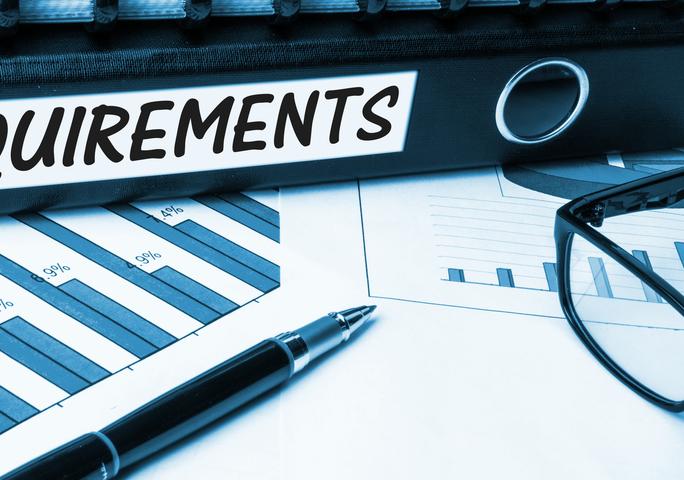We encounter compliance marks and other product labels on an almost daily basis, without giving them much though. Some well-known examples include the CE mark and country of origin labels (e.g Made in China).
Many product and packaging labels are not optional, but mandatory. Importing products without the right compliance marks and label information can result in a recall or even fines.
Notice that this guide doesn’t cover every single compliance mark or labeling requirement in the EU or USA.
- CE Mark
- WEEE Mark
- EU Textiles Labeling
- Knife and Fork Label
- Tracking Label/Batch ID
- Country of Origin
- CPSIA Tracking Label
- FCC Symbol
- US Textiles Labeling
- FAQ
European Union
CE Mark
The CE mark is mandatory in the EU for a wide range of products and signals that the product is compliant with all applicable regulations and directives, for which the CE mark is required. Here are some products which must carry the CE mark:
- Electronics
- Toys
- Sunglasses
- Medical devices
- Bicycles
- Helmets
- Protective gloves
- Machines
Here are some directives and regulations for which CE marking is required:
- Low Voltage Directive
- EMC Directive
- Radio Equipment Directive
- Personal Protective Equipment Regulation
- Medical Devices Directive
- Machinery Directive
Notice that the CE mark itself is not sufficient. Products covered by one or more “CE marking directives” must also provide documentation.
The CE mark can be found on the product, its packaging, and the user manual.
WEEE Mark
The WEEE mark is required for most electronic products in the EU and indicates separate collection and recycling. The WEEE mark is commonly found on the product and user manual.
EU Textiles Labeling
Clothing and other textile products must have a label that includes care instructions and fiber composition (e.g. 100% polyester) - in the language of the EU country its sold.
- Care instructions or symbols
- Fiber composition
Knife and Fork Label
The ‘Knife and Fork’ label indicates that the product is safe to use in contact with food or beverage. That said, it’s only required in case it’s not common knowledge or ‘obvious’ that the product is used as a food contact material.
For example, a spoon or a wine glass doesn’t need to carry the knife and fork label. However, it is necessary for certain kitchen appliances and devices.
Tracking Label/Batch ID
Tracking labels are mandatory for certain products, such as toys and some food contact products, in the EU. The purpose of a tracking label (or Batch ID) is to make the product traceable. The format is often up to the importer or manufacturer to decide but must include information about the product or model, batch and production facility. The tracking label can, for example, be used to trace products in case of a recall.
United States
Country of Origin
Country of Origin Labels (e.g. Made in China or Made in Vietnam) are mandatory for essentially all consumer products sold in the United States. Further, the country of origin label must also be permanent and clearly visible to the consumer.
It’s also important to mention that there are strict rules concerning the origin country. Some companies try to go around this by shipping goods to a third-country (also known as transshipping) and thereby claiming that the product was made elsewhere. This practice is not allowed.
CPSIA Tracking Label
The Consumer Product Safety Improvement Act requires that all children’s products (e.g. products for 12-year-olds or younger) carry a tracking label. This information must be included:
1. Domestic manufacturer or importer
2. Production location (e.g. city, state or province) and date
3. Batch number
4. Relevant information about the product and materials
Example
- Toy Wholesale LLC
- Date: June 2020
- Location: Dongguan, China
- Batch number: RSX-200629-CN
- All new materials
- PE plastic
You can also find examples on the CPSIA website.
FCC Symbol
The FCC is required for some electronics products, and indicates compliance with the various FCC rules, covering both intentional and unintentional radiators. The FCC label can be found on everything from laptops to GPS devices.
US Textiles Labeling
Clothing textiles sold in the USA must carry textiles labels, which must include the fiber composition, ASTM care symbols or care instructions. Further, the label must be in the English language.
FAQ
Can more than one labeling requirement apply to a certain product?
Yes, and that is often the case. For example, most electronic products sold in the European Union must carry both the CE mark and the WEEE symbol. Likewise, children’s products sold in the United States must carry both the CPSIA tracking label, and include the country of origin.
Can I trust that my supplier will apply the correct product and packaging labels?
Manufacturers in foreign countries should never be relied upon when it comes to product and packaging labels. In fact, most factories in China and elsewhere are not compliant experts and expect their buyers to provide ready-made label files and clear instructions.
Assuming that your supplier will somehow know or “get it right” can result in non-compliant products that cannot be imported or sold in your country.
How do I ensure that my products get correctly labeled?
As mentioned, you need to provide ready-made label files to your supplier. In addition, you should also provide the following information to your supplier:
- Print position
- Color
- Dimensions
Further, packaging and manual layout files must also include all mandatory compliance marks and label information.
Finally, it’s important to book a quality inspection to verify that the products are correctly labeled before shipment.
